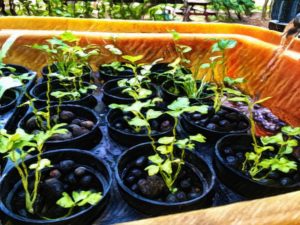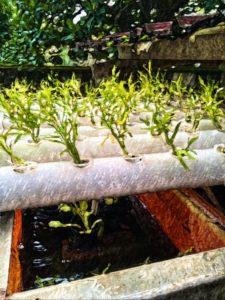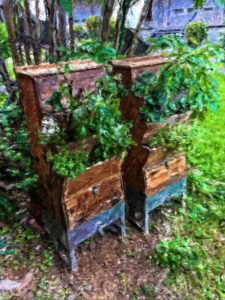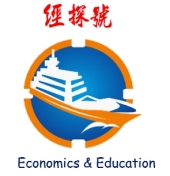Tamkang Senior High School’s Circular Regenerative Agriculture
翻譯: 徐瑞儀

Along with climate change and the environment disruption, nature’s counterattack is getting harsher and harsher every year, and the lack of water resources is going to be a serious problem we need to face. How to let water be effectively used without running off rapidly and become underground water is our priority issue. The one and only way to let students learn the concept of reusing water resources and implement it into every family is through education.
To let the students know how to make the most of every water resource, Tamkang Senior High School extends from aquaponics courses to circular regenerative agriculture lessons. The cycle of installing a gutter on the canopy until it’s filled with water and using the water to provide the needs of the aquaponics system, it’s what we called Aquaponics. This emerging industry combined aquaculture with Hydroponics, using the nitrogen cycle to purify water quality and provide plants the nutrients they need for growth. Eventually, the gases return to the fishpond and create a pumping function that allows the fish to have a more comfortable environment to symbiose.
 In aquaponics, fish’s solid excrement must be filtered and removed. Therefore, we use a simple cotton filter to accomplish it, and clean it once a week on average. In order to let the cleaning water be reused, we’ll use the restoration of Paradise fish by preparing a big breeding tank to plant Lotus flower and nurture Paradise fish. Afterwards, we clean the filter cotton directly inside the tank. The fish excrement we cleaned out will deposit and become the nutrients for the Lotus flowers. Moreover, Paradise fish will be able to breed well under the circumstances with adequate food sources. Back to the part of cleaning filter cotton, we use a bucket to carry raindrops and directly clean the filter cotton inside, which the sludge water will directly import into our Earthworm tank, making earthworm water by leaching. Earthworm water has lots of Streptomyces (Scavenger of the Earth), which we could use as soil texture improving and go back in the aquaponics to complement the insufficiency of micronutrients, like Calcium, Phosphorus, Potassium, Iron, etc.
In aquaponics, fish’s solid excrement must be filtered and removed. Therefore, we use a simple cotton filter to accomplish it, and clean it once a week on average. In order to let the cleaning water be reused, we’ll use the restoration of Paradise fish by preparing a big breeding tank to plant Lotus flower and nurture Paradise fish. Afterwards, we clean the filter cotton directly inside the tank. The fish excrement we cleaned out will deposit and become the nutrients for the Lotus flowers. Moreover, Paradise fish will be able to breed well under the circumstances with adequate food sources. Back to the part of cleaning filter cotton, we use a bucket to carry raindrops and directly clean the filter cotton inside, which the sludge water will directly import into our Earthworm tank, making earthworm water by leaching. Earthworm water has lots of Streptomyces (Scavenger of the Earth), which we could use as soil texture improving and go back in the aquaponics to complement the insufficiency of micronutrients, like Calcium, Phosphorus, Potassium, Iron, etc.
We really pay attention to students’ implementation and the concept of regenerative cycle. Instead of buying delicate aquaponics that were designed by other people, we create the value of life by using waste. Students reach their full potential in divergent thinking to build up their own aquaponics by picking up materials like pipes, plastic drums, etc. From the implementation, they learn how to use every piece of tool and understand the concept of cherishing.

To solve the problem of not having enough nutrients in aquaponics and finding feed sources for the fish, not only do we use an Earthworm tank to take care of the kitchen waste for the whole school’s cafeteria, but also use it to provide Earthworm water to complement the insufficiency. Meanwhile, we also use Earthworm tanks to produce more Black Soldier flies to feed the fish and chickens, and solve the part of students’ food waste, easing the burden on the incinerator and reducing the production of Dioxin. After eating Black Soldier flies, chickens can substantially heighten the quality of the eggs (Black Soldier flies have antibacterial peptides). We even combined community care by giving Tamkang eggs to elderly living alone and the underprivileged families, letting the students know how to cherish things and contribute to the society through education.
We built an entire semester of elective subjects. Besides connecting theory and practice, we also try to let students understand the importance of eco-friendly agriculture and environmental issues in the first line through farm-visiting. We believe that after this course, kids in the future will have the ability to practice recycling in all kinds of resources.
